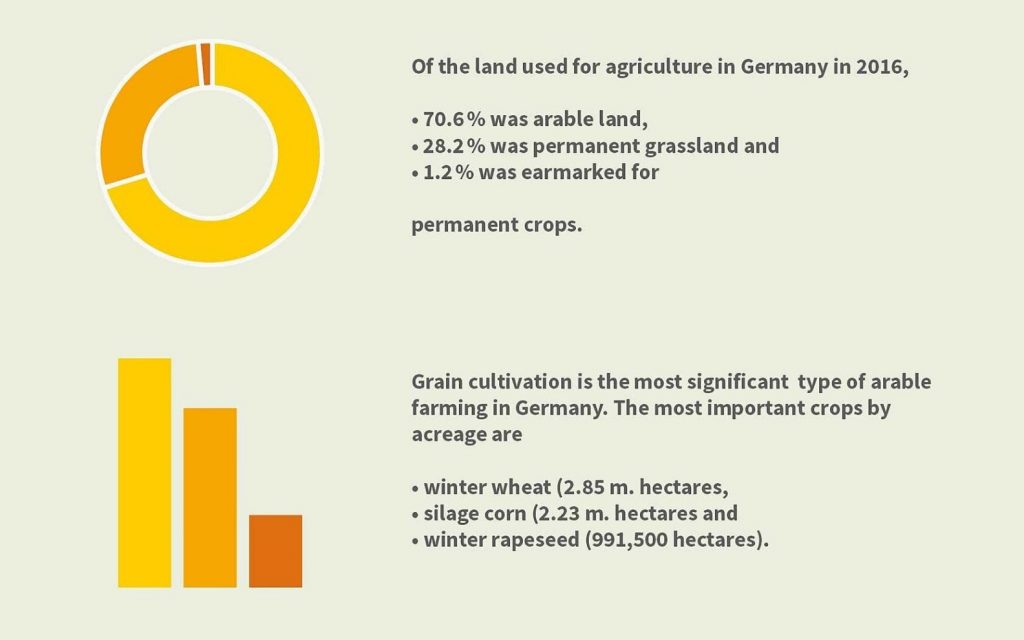Guest Blog by Elementar
Soils are the largest terrestrial carbon sinks. Their organic matter determines how well they can sequester carbon; together with forests and oceans, they are among the most important global sinks of CO2. The carbon content of soil not only provides information about its impact on the environment but also has a significant influence on its fertility.

Professor Bernd Honermeier, former Head of the Department of Crop Production at Justus Liebig University Giessen from 1998 to 2020, is an expert in this area. In a continuous field trial, he and his colleagues research, how the use of different fertilizers and forms of cultivation can affect the carbon content of the soil and, thus, crop yields in the long-term.
Their research has shown that the type of tillage also has a critical influence on water retention and carbon accumulation. “Whereas cultivation that disturbs the soil by loosening and turning it too vigorously can result in more water losses,” explains Professor Honermeier, “it is possible to preserve the water balance by practicing conservation agriculture. In this context, conservation means loosening the soil less frequently and adding more plant residues throughout the year by mulching to ensure that oxygen input, water infiltration and soil erosion are kept to a minimum.”
Elemental analysis of soil samples
Professor Honermeier’s research team uses elemental analysis to determine the carbon and nitrogen content of soils and the biomass of crops. A conversion factor based on the nitrogen values analyzed in the biomass can be used to calculate both the nitrogen removal of the plants (for example, through harvesting) and the crude protein content of the seeds. This data, particularly the removal of nutrients, is the prerequisite for nutrient balances in crop rotations and is necessary to evaluate the efficiency of fertilization measures.
Elemental analysis makes it possible to analyze a large number of samples in a short time and to evaluate the data immediately. “We then determine the content of total carbon and organic carbon (Corg), and the content of nitrogen in a soil layer based on the carbon and nitrogen content of the soil samples. This makes it possible for us to assess the potential of the soil to store carbon and nitrogen under the influence of management measures – i.e. crop rotation, tillage, and fertilization,” Professor Honermeier says, describing the procedure.

Source: German Federal Ministry of Food and Agriculture / Federal Statistical Office
The Justus Liebig University Giessen (JLU) is conducting several permanent field trials on agricultural land, the oldest of which was established back in 1954. Corn, winter wheat and spring barley are being cultivated in a three-year crop rotation on the plots. Different methods of fertilization are being used in each case. Regular soil sampling is being used to investigate the long-term effect on the soil and crop yields of mineral nitrogen, phosphorus and potassium fertilization (NPK fertilization) in combination with the use of stable manure.
Two factors in particular have a positive effect on carbon accumulation in the soil: regular organic fertilization, with straw or compost, for example, and regular cultivation of summer catch crops. The results provide insight into effective and yield-increasing methods for the tillage of arable land. But there are also other starting points for optimizing yields in the field of plant breeding and precision farming. You can read more about this in the next part of this blog series.
About Elementar
Elementar is one of the leading manufacturers in high-performance analysis of organic and inorganic elements. We incorporate more than 125 years of experience in the development and manufacturing of high-class analytical instrumentation. Today, our product portfolio includes instruments for CHNOS elemental analysis, stable isotope analysis (IRMS), TOC analysis, protein analysis according to Dumas, and optical emission spectrometry (OES).
Continuous innovation, creative solutions and comprehensive support form the foundation of the Elementar brand, ensuring our products continue to advance science across agriculture, chemical, environmental, energy, materials, and forensics markets in more than 80 countries.




